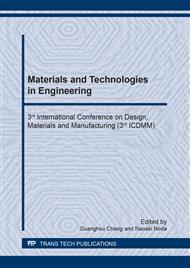p.3
p.8
p.15
p.23
p.28
p.35
p.40
p.46
Linear and Hyperbranched Copolymers of PEG-Based Acrylates and Methacrylic Acid as pH-Responsive Hydrophobic Drug Carriers
Abstract:
The oral administration of pharmaceuticals is typically preferred over other methods due to its non-intrusiveness and convenience of administration. However, the varying chemical environments of the gastro-intestinal tract pose a challenge in ensuring the stability and inertness of a drug compound until it reaches its target. Polymers that are responsive to pH changes have potential as smart materials for the controlled oral administration of pharmaceuticals. In this study, linear and hyperbranched copolymers of methacrylic acid (MAA) and poly (ethylene glycol) methyl ether methacrylate (PEGMEMA) were synthesized by RAFT polymerization. High molecular weight polymers were produced with PDI values close to 1.0. These smart materials underwent phase changes at pH 5.15-5.6. This property enabled the amphiphilicity of the copolymers to be switched on or off. By doing so in in vitro drug release studies with ibuprofen as the model hydrophobic drug, the copolymers were able to inhibit drug release in simulated stomach conditions to up to 13% while enhancing drug release in simulated intestinal conditions to up to 75% within 6 hours. These indicate that copolymers based on MAA and PEGMEMA have potential as smart materials for drug delivery applications.
Info:
Periodical:
Pages:
15-20
Citation:
Online since:
December 2018
Keywords:
Price:
Сopyright:
© 2018 Trans Tech Publications Ltd. All Rights Reserved
Share:
Citation:


